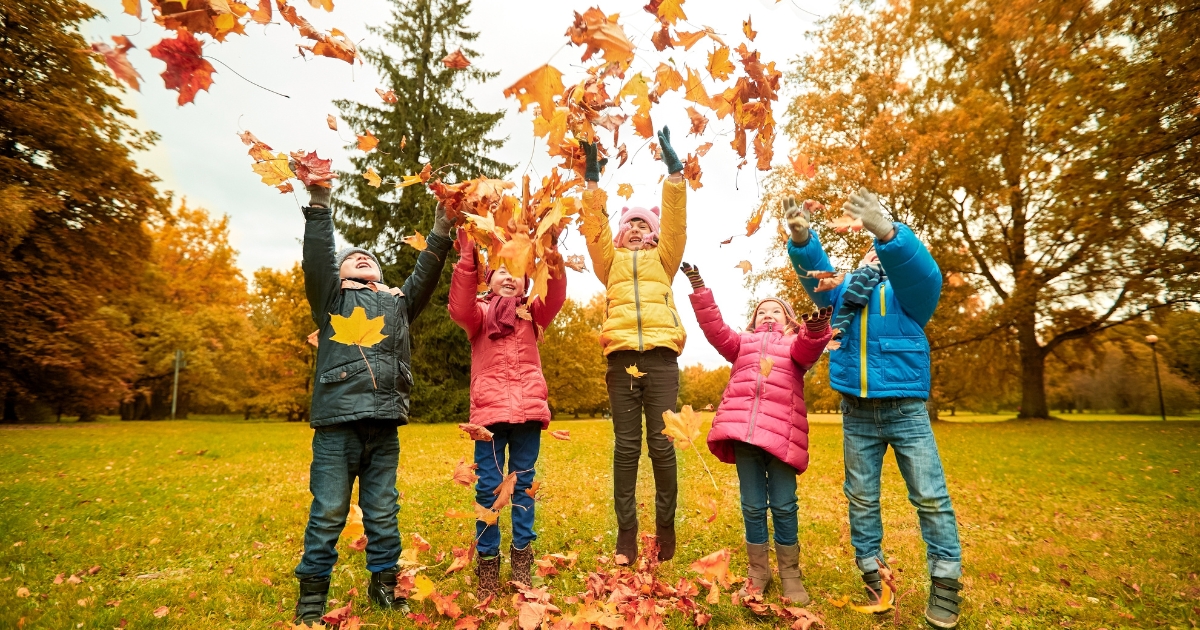The air is getting crisp, the leaves are turning brilliant shades of red and gold, and a cozy feeling settles over everything. Autumn brings a special kind of magic, offering a perfect opportunity to move your classroom outdoors. The mild temperatures and stunning natural displays create an ideal backdrop for learning that feels less like a lesson and more like an adventure. For homeschooling families, this season is a goldmine of educational potential. Embracing outdoor homeschool activities in autumn not only breaks up the routine but also connects your children to the world around them in a tangible, memorable way. It’s a chance to explore science, art, literature, and even math through hands-on experiences that no textbook can replicate.
This guide will provide you with practical ideas and tips to help you and your children make the most of this beautiful season, turning every walk in the woods or visit to a pumpkin patch into a rich learning opportunity.
Weaving Nature Into Your Core Subjects
One of the biggest advantages of homeschooling is the flexibility to integrate subjects seamlessly. Autumn provides the perfect canvas for this. Instead of treating “outside time” as a separate activity, think of it as your classroom for the day. You can cover all your core subjects—math, science, language arts, and history—using the natural world as your guide. This approach helps children see learning not as a collection of isolated subjects but as an interconnected web of knowledge. When a child measures the circumference of a pumpkin, they are doing math. When they write a poem about the changing leaves, they are practicing language arts. These outdoor homeschool activities in autumn make learning relevant and engaging.
By stepping outside, you transform abstract concepts into concrete experiences, which is especially powerful for younger learners and those who thrive on kinesthetic activities. The key is to be intentional but also flexible. Have a loose plan, but be ready to follow your child’s curiosity wherever it may lead, whether it’s an unusual mushroom, a chattering squirrel, or a perfectly formed spiderweb glistening with morning dew.
This season is particularly rich for scientific observation. The biological processes happening are visible and dramatic. Trees are preparing for winter, animals are getting ready for hibernation or migration, and the life cycles of plants are coming to a close. These are not just facts in a book; they are real events you can witness and document together. You can also explore physical science concepts. For example, discuss why the days are getting shorter and what that means for temperature and plant life. Talk about weather patterns, cloud formations, and the science behind frost. For history, you can connect your outdoor explorations to how people in the past lived. Discuss how Native Americans and early settlers prepared for winter, what they ate, and how they used the natural resources available to them in the fall.
Visiting a local historical farm or landmark can bring these lessons to life. Art is everywhere in autumn. The colors, textures, and light are an artist’s dream. By bringing your core subjects outside, you show your children that learning is a dynamic, ongoing process that happens all around them, not just at a desk.
Practical Homeschool Outdoor Learning Tips
To make your outdoor educational adventures successful and stress-free, a little preparation goes a long way. The goal is to create an environment where learning can happen naturally, without being hampered by discomfort or disorganization. The right mindset and a few key supplies can turn a simple walk into a productive and joyful learning session. First and foremost, embrace the mess. Outdoor learning means dirt, mud, wet leaves, and maybe even a few grass stains.
Dressing for the occasion is crucial. Layers are your best friend in the unpredictable autumn weather. A waterproof outer layer, sturdy boots, and perhaps a warm hat and gloves will ensure that everyone stays comfortable, allowing you to focus on the experience rather than the temperature. It’s also wise to have a change of clothes waiting in the car or by the back door for when you return home.
Your outdoor “classroom” requires a different kind of school supply list. Create a dedicated “nature explorer” bag that is always ready to go. This simple step can make spontaneous trips much easier. Here are some essentials to include in your kit:
- Observation Tools: Magnifying glasses are a must for examining insects, leaves, and bark up close. Binoculars are fantastic for bird watching or getting a better look at squirrels high up in the trees.
- Collection Containers: Bring along bags, jars, or buckets for collecting treasures like interesting leaves, acorns, pinecones, and cool rocks. Egg cartons are perfect for sorting small, delicate finds.
- Documentation Supplies: A nature journal is one of the most valuable tools for outdoor learning. Pack sturdy, spiral-bound notebooks and a mix of pencils, colored pencils, and perhaps some watercolor paints. A clipboard can provide a stable surface for drawing and writing.
- Field Guides: Invest in a few child-friendly field guides for your local area. Books on trees, birds, insects, and wildflowers can help you identify your discoveries on the spot, turning curiosity into knowledge.
- Comfort and Safety: Pack a small first-aid kit, insect repellent (ticks can still be active), sunscreen, water bottles, and some simple, easy-to-eat snacks. A picnic blanket is also great to have for moments of rest or for sitting down to journal.
- Tech Tools (Optional): Your smartphone can be a powerful learning tool. Use it to take pictures of things you can’t identify to look up later. Apps for identifying plants, birdsongs, or constellations can add another layer to your exploration.

Finally, set a purpose for your outing, but hold it loosely. Maybe your goal is to find five different types of leaves or to observe three different bird species. Having a simple objective can provide focus, but don’t be so rigid that you miss unexpected learning moments. If your child becomes fascinated by a line of ants marching across the path, abandon the leaf hunt and dive into the world of insects. The most profound learning often happens in these unplanned detours.
Autumn Nature Study Ideas For All Ages
Autumn offers a spectacular, ever-changing laboratory for nature study. The key to a successful nature study is to encourage observation, questioning, and documentation. It’s about slowing down and truly seeing the world. The same location can offer different lessons from week to week as the season progresses. These studies can be adapted for any age, from the simplest observations for a preschooler to more complex scientific inquiries for a high schooler.
A kindergartener might focus on the colors and shapes of leaves, while a high school student could research the chemical processes of photosynthesis and chlorophyll breakdown that cause those colors to appear. A multi-age group can work together, with older children helping younger ones with identifications and observations. The shared experience builds family bonds while deepening everyone’s understanding and appreciation for the natural world.
The beauty of nature study is its simplicity. It doesn’t require expensive curriculum or elaborate setups. It just requires you and your children to be present and curious. You can start in your own backyard or a local park. As you build confidence, you can venture further to state parks, nature reserves, or botanical gardens. Keeping a dedicated nature journal is the cornerstone of this practice. Each entry can include the date, weather, and location, followed by drawings, notes, leaf rubbings, and any questions that arise.
Over time, these journals become a beautiful record of your child’s learning journey and their growing connection to nature. They are also a fantastic portfolio piece, showcasing skills in scientific observation, writing, and art. Don’t worry about making the journals perfect; the process is more important than the final product. Encourage your children to record what they find interesting, whether it’s a detailed drawing of a mushroom or a poem about the wind.
Here are some specific autumn nature study ideas you can try:
- Leaf Chromatography: This simple science experiment is pure magic. It separates the pigments in a green leaf to reveal the hidden yellows and oranges that were there all along. You just need leaves, a jar, rubbing alcohol, and a coffee filter. It’s a stunning visual that explains why leaves change color.
- Decomposition Study: Find a safe spot to create a “decomposition pile” with leaves, apple cores, and other organic matter. Observe it over several weeks or months (a clear container with a lid works well for this). You can study the process of decay and the role of fungi, bacteria, and insects in creating new soil.
- Seed Dispersal Investigation: Autumn is all about seeds. Go on a seed hunt and discover all the clever ways plants spread their offspring. Look for “hitchhiker” seeds that stick to your socks, “helicopter” seeds from maple trees, fluffy seeds that fly on the wind, and nuts buried by squirrels.
- Fungus Foray: After an autumn rain is the perfect time to go searching for mushrooms and other fungi. While teaching extreme caution about not touching or eating unknown fungi, you can photograph and draw the incredible variety of shapes, colors, and textures. Study the role of fungi as nature’s great recyclers.
- Weather Tracking: Autumn weather is dynamic. Create a weather station in your backyard to track temperature, rainfall, and wind direction. Chart the changes over time and make predictions. Discuss how the changing weather affects plants and animals.
- Animal Behavior Observation: Pay close attention to the animals around you. Are squirrels frantically burying nuts? Are birds gathering in large flocks? Research these behaviors to understand how animals prepare for winter. You could create a chart to log bird sightings or map out squirrel territories in a local park.
- Apple Exploration: Visit an apple orchard or get several different apple varieties from the store. Conduct a taste test and chart the results. Cut them open to study the parts of the fruit, count the seeds, and do apple-themed art projects like apple printing. You can also delve into the history of apples and figures like Johnny Appleseed.
Making Learning An Adventure
Ultimately, the goal of incorporating outdoor homeschool activities in autumn is to cultivate a lifelong love of learning and a deep respect for the natural world. It’s about shifting the focus from rote memorization to joyful discovery. When you present learning as an adventure, children are more likely to engage wholeheartedly. Frame your outings with a sense of excitement and mystery. You aren’t just going for a walk; you are “tree detectives” on a mission to identify every tree in the park. You aren’t just collecting leaves; you are “botanists” creating a scientific collection of local flora.
This playful approach sparks imagination and makes educational concepts stick. The stories you create around your activities will become cherished family memories, intertwined with the scent of damp earth and the sight of golden sunlight filtering through the trees.
This spirit of adventure also encourages resilience and problem-solving. Nature is unpredictable. A planned picnic might get rained out, or a trail might be unexpectedly muddy. These moments are not failures; they are learning opportunities. They teach children to be flexible, to adapt their plans, and to find the good in any situation. A rainy day can become a chance to study worms and slugs or to simply enjoy the fun of splashing in puddles.
Getting a little lost (in a safe, managed way) can become a lesson in map-reading and navigation. By modeling a positive and adaptable attitude, you teach your children a valuable life skill. You show them that challenges are a part of any adventure and that overcoming them is part of the fun. This builds confidence and a “can-do” spirit that will serve them well in all areas of their life. So pack your explorer bag, put on your boots, and step outside.
Your greatest classroom awaits, and the adventure of autumn learning is ready to begin.





